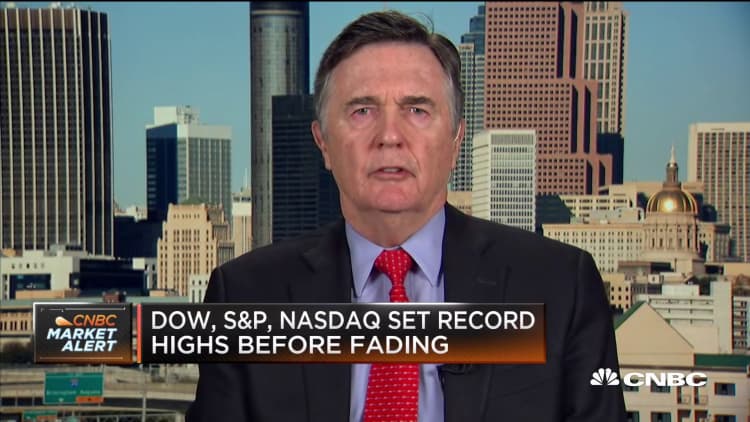
The Federal Reserve may need to continue its efforts to calm the overnight lending market in the new year, former Atlanta Fed President Dennis Lockhart told CNBC on Friday.
The market, which banks use to fill short-term funding needs, suffered a sharp rise in rates in September. Lockhart said on "Squawk on the Street" that this came from a "miscalculation" for the proper level of reserves and how they would be distributed among banks. And the Fed is now trying to find the right balance.
"That's a little bit of a trial and error kind of thing," Lockhart said. "And they have been injecting more bank reserves into the system to try to make sure the repo market first got through year-end, which we'll see in the next couple of days, and secondly continues without undo volatility."
The repo market is a key part of the financial system where banks can receive short-term loans to fund themselves. Interest rates in that market spiked in September, leading the Fed to step in with both overnight lending and a program to increase liquidity by buying Treasurys on the open market.
Lockhart said he does not view the Treasury purchases as a return of quantitative easing practices, which the Fed used after the 2008 financial crisis, but as part of a strategy to settle the repo market. Fed Chairman Jerome Powell has said the purchases are "in no sense" quantitative easing.
Quantitative easing refers to the Fed's program of buying mortgage-backed securities and other assets after the financial crisis in an attempt to stabilize the financial system and stimulate the economy. The recent Treasury purchases have increased the Fed's balance sheet by roughly $400 billion since early September, leading some to argue that the program marked a return of quantitative easing.
In three rounds of asset purchases after the financial crisis, the Fed's balance sheet swelled from $870 billion in August 2007 to more than $4.5 trillion before the central bank reversed course in 2017.
Lockhart, who was president of the Atlanta Fed from 2007 to 2017, said he did not think the Fed's current policy would be "indefinite."
"Once they get it right, I would expect them to back off," Lockhart said.


